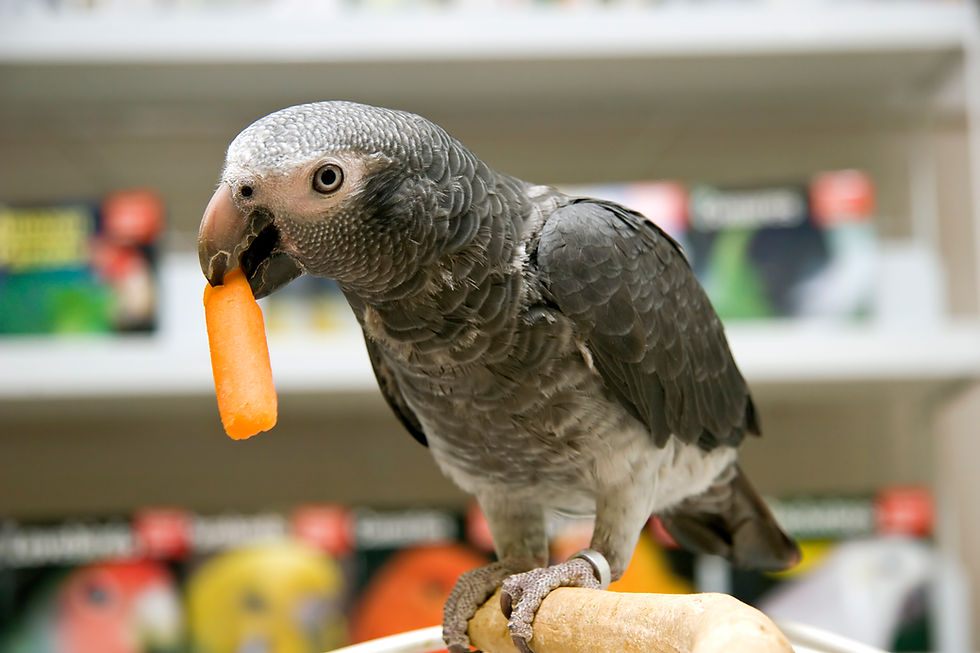Bunny Heaven! How to Create a Rabbit-Friendly Haven for Your New Pet
- LIBEVC

- Dec 15, 2023
- 3 min read

Congratulations on welcoming a new rabbit into your family! As you embark on this exciting journey, our medical team wants to offer some tips about how to create a rabbit-friendly environment that ensures your furry friend's safety, well-being and overall happiness. In this guide, our exotics specialty vets share some essential tips for setting up the perfect habitat, including suitable housing, engaging toys, preventative medical care and the importance of socialization.
1. Selecting the Right Housing: A Comfortable Retreat
The first step in creating a rabbit-friendly environment is providing a comfortable and secure living space. Consider a spacious indoor rabbit hutch or playpen set-up with appropriate flooring that allows ample room for movement. We do not recommend cages for rabbits and we do not recommend housing rabbits outdoors. Ensure the enclosure has soft, non-slip flooring to protect delicate rabbit feet.
If you plan to give your rabbit the run of your house, be sure to read tips on how to raise a free-roaming rabbit in a way that’s safe for you, your bunny and any other household pets.
2. The Importance of Enrichment Toys: Stimulating the Mind
Rabbits are intelligent and curious creatures that thrive on mental stimulation. Incorporate a variety of toys to keep your rabbit engaged and entertained. Toys such as chew toys, tunnels, and puzzle feeders can prevent boredom and encourage natural behaviors like digging and chewing.
3. Creating a Cozy Resting Area: A Safe Haven
Provide your rabbit with a cozy resting area where they can retreat for comfort and relaxation. Line their enclosure with soft bedding materials, such as hay or straw, to mimic their natural habitat. Ensure the bedding is changed regularly to maintain cleanliness and prevent health issues.
4. Proper Nutrition: A Well-Balanced Diet
A rabbit-friendly environment goes beyond the physical space—it also involves providing a nutritionally balanced diet. Ensure your rabbit has access to fresh hay, a staple in their diet that aids digestion and dental health. Supplement their diet with fresh greens and vegetables and high-quality rabbit pellets. Always consult with a veterinarian to determine the specific dietary needs of your rabbit.
Our comprehensive care guide includes more rabbit nutrition tips.
5. Socialization: Building Trust and Bonds
Rabbits are social animals, and they benefit enormously from interaction with their human companions. Spend quality time with your rabbit which can include petting, grooming, cuddling gently and talking to them. They’ll soon get to recognize your voice. (In fact, you can even teach them to come when they’re called!) Gradually introduce your rabbit to family members and other pets in a controlled and supervised manner. Building positive associations early on will help your rabbit know they are safe, secure, and oh-so-loved.
6. Veterinary Care: Prioritize Regular Check-Ups
Maintaining your rabbit's health is a vital aspect of creating a rabbit-friendly environment. Schedule regular veterinary check-ups to monitor your rabbit's well-being, address any potential health concerns, and stay up-to-date on vaccinations. Currently, in the United States, there is only one vaccination safe and USDA-CVB approved for rabbits known as RHDV2. This vaccine can protect your rabbit from the fatal Rabbit Hemorrhagic Disease Virus, so be sure to bring your pet in as soon as the rabbit is 7 weeks of age.
7. Safe Exploration: Bunny-Proofing Your Home
Rabbits love to explore, and it's essential to create a safe environment for their adventures. Take time before your new bunny comes home to make sure the space is safe for them. As with a new baby or toddler, you want to remove potential hazards such as electrical cords, toxic plants, plastic, and small objects that your rabbit could ingest or choke on. Provide a designated play area where your rabbit can hop and explore safely, particularly if they won’t always be in their enclosure.
8. Grooming and Hygiene: A Well-Groomed Bunny
Regular grooming is crucial for maintaining your rabbit's health and preventing common issues like fur matts and overgrown nails. Brush your rabbit's fur gently and trim their nails regularly. This not only keeps them looking tidy but also contributes to their overall well-being. Overgrown nails can lead to mobility issues and discomfort. If you are unsure how to safely groom your pet, contact your nearest exotics specialty practice for guidance. We do not advise seeking grooming advice from primarily cat and dog grooming services or pet stores.
In conclusion, creating a rabbit-friendly environment involves a combination of physical accommodations, mental stimulation, social interaction, and proper care. By following these tips and integrating them into your daily routine, you'll be well on your way to providing a loving and secure home for your new pet rabbit.
Remember, each rabbit is unique, so pay attention to their individual preferences and behaviors to tailor their environment accordingly. If you ever have specific concerns or questions about your rabbit's health or behavior, please bring him or her in for a check-up! (Or - if you’re not in the Long Island area, find a knowledgeable exotics specialty veterinarian nearby to ensure your rabbit is in tiptop shape.)
Want even more rabbit tips?
Check out our comprehensive rabbit care guide.



